A proposed constitutional change before Ohio voters could determine abortion rights in the state
COLUMBUS, Ohio (AP) — Voters in Ohio on Tuesday have weighed in on whether to make it more difficult to change the state’s constitution, a decision that will have national implications in the debate over the future of abortion rights in the United States.
The proposal on the ballot, known as Issue 1, would raise the threshold for passing future changes to the Ohio Constitution from a simple majority to 60%. That would raise the bar for another election in November, when voters in the state are scheduled to consider a constitutional amendment that would guarantee access to abortion.
With that in mind, voters turned out in massive numbers for a summer special election. During the early voting period, which ended Sunday, the number of advance ballots cast hit nearly 700,000, more than double the early vote during primary elections in 2018 and 2022, when high-profile races for U.S. Senate and governor were on the ballot.
The vote on Tuesday was poised to become the latest referendum on abortion rights since the U.S. Supreme Court’s decision last year to rescind federal protections for the procedure, creating a state-by-state patchwork of restrictions and bans. Voters in other Republican-leaning states, including Kansas and Kentucky, have responded by protecting abortion access, and the issue helped Democrats limit their losses in last year’s midterm elections.
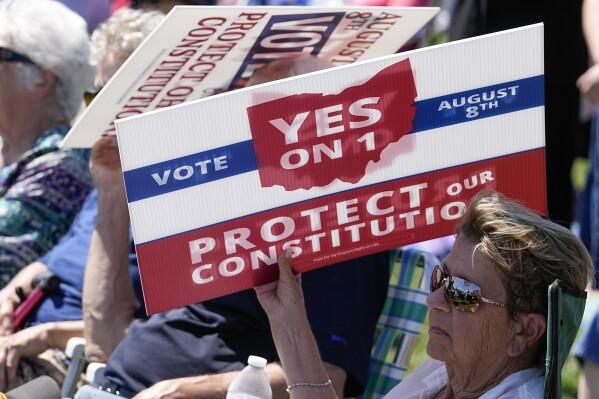 An Ohio election that revolves around abortion rights is fueled by national groups and money
An Ohio election that revolves around abortion rights is fueled by national groups and money
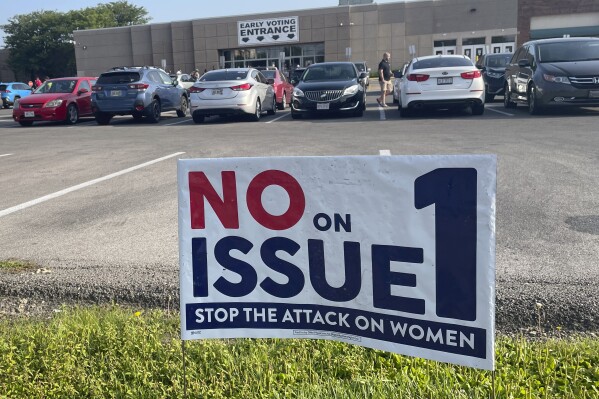 Fall abortion battle propels huge early voter turnout for an Ohio special election next week
Fall abortion battle propels huge early voter turnout for an Ohio special election next week
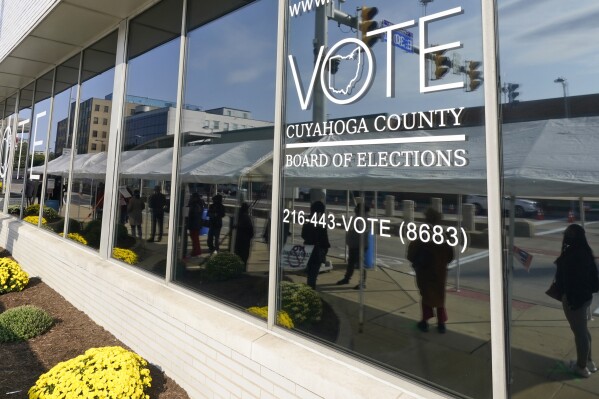 Election on constitutional amendments in Ohio could impact abortion rights measure
Election on constitutional amendments in Ohio could impact abortion rights measure
Ohio could be well positioned to join the list of conservative-leaning states moving to protect access to abortion. AP VoteCast polling last year found that 59% of Ohio voters say abortion should generally be legal.
Out-of-state money poured into both sides of the contest over the 60% threshold, even as both supporters and opponents say one of their main goals is to keep special interests from having more influence over state policy than average Ohioans.
The campaign in favor of Issue 1, Protect Our Constitution, told voters that raising the threshold will keep deep-pocketed interest groups from pushing redistricting, gun control and minimum wage policies on Ohio. One Person One Vote, the opposition campaign, argued that raising the threshold for passing future amendments would prioritize the interests of Ohio’s increasingly conservative GOP supermajority at the statehouse over those of everyday voters.
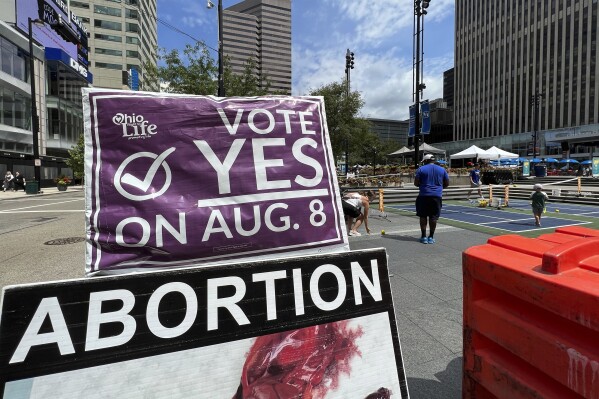
A sign asking Ohioans to vote in support of Issue 1 sits above another sign advocating against abortion rights at an event hosted by Created Equal on July 20, 2023, in Cincinnati, Ohio. (AP Photo/Patrick Orsagos, File)
Eric Chon, a Columbus resident, said he voted no on Issue 1. To him and other voters at the polls Tuesday, there’s a clear anti-abortion agenda to the election. Noting that the GOP voted just last year to get rid of August elections entirely due to low turnout for hyperlocal issues, Chon said, “Every time something doesn’t go their way, they change the rules.”
Al Daum, of Hilliard, just west of Columbus, said he doesn’t feel the rules are being changed to thwart his voting. He said he voted yes on Issue 1. Along with increasing the threshold to 60%, the measure would mandate any signatures for a constitutional amendment be gathered from all of Ohio’s 88 counties, not just 44. It’s a change that Daum said would give more Ohio residents a chance to make their voices heard.
Abortion rights are at the epicenter of the fight, as Ohio and other states have been given control of their own abortion policies following the Supreme Court overturning Roe v. Wade last summer. Ohio’s ban on most abortions had been placed on hold under Roe and then allowed to take effect briefly after the court overturned it. Since then, it has been frozen again while a challenge alleging it violates the state constitution plays out.
The abortion amendment would give individuals the right to make their own reproductive health care decisions, including on contraception, fertility treatment, abortion and miscarriage care, until a fetus is viable outside the womb.
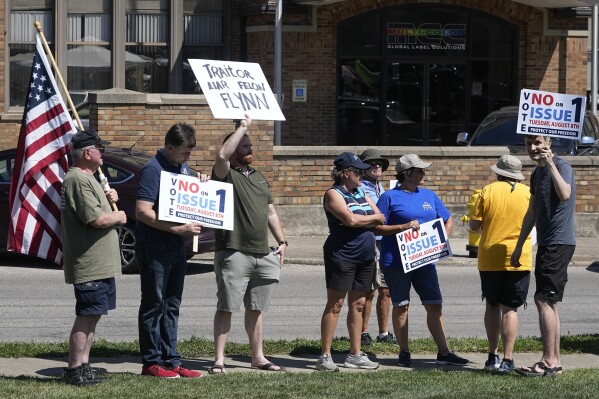
A small group of protestors gather during a “rosary rally” on Aug. 6, 2023, in Norwood, Ohio. (AP Photo/Darron Cummings, File)
At the same time, a broad bipartisan coalition opposed Issue 1 for other reasons. Former Ohio governors and attorneys general of both parties came out against the constitutional change, calling it poor public policy. If passed, it would reverse 111 years of direct democracy that has the potential to affect future citizen-led ballot efforts.
Protect Women Ohio, the campaign against the fall abortion question, has spent millions of dollars on the August election — airing ads suggesting the measure not only codifies abortion, but could pressure children into receiving gender-affirming care and undercut parental rights.
Several legal experts have said there is no language in the amendment supporting the ads’ claims, but it follows a pattern through this election cycle of misinformation and fear-mongering being used to sway voters.
Issue 1 opponents aired ads and mobilized a large coalition, including voting rights, labor, faith and community groups, as well as the state Democratic Party.
It was because of chronically low turnout that lawmakers voted just last year to scrap summer elections, prompting an unsuccessful lawsuit alleging this year’s August special election violated the new law and calling further into question if it was brought back solely to thwart abortion rights for Ohioans.
___
The Associated Press receives support from several private foundations to enhance its explanatory coverage of elections and democracy. See more about AP’s democracy initiative here. The AP is solely responsible for all content.
___
Samantha Hendrickson is a corps member for the Associated Press/Report for America Statehouse News Initiative. Report for America is a nonprofit national service program that places journalists in local newsrooms to report on undercovered issues.
Disclaimer: The copyright of this article belongs to the original author. Reposting this article is solely for the purpose of information dissemination and does not constitute any investment advice. If there is any infringement, please contact us immediately. We will make corrections or deletions as necessary. Thank you.



